Review: Keldan Spectrum and Ambient Filters by Massimo Franzese
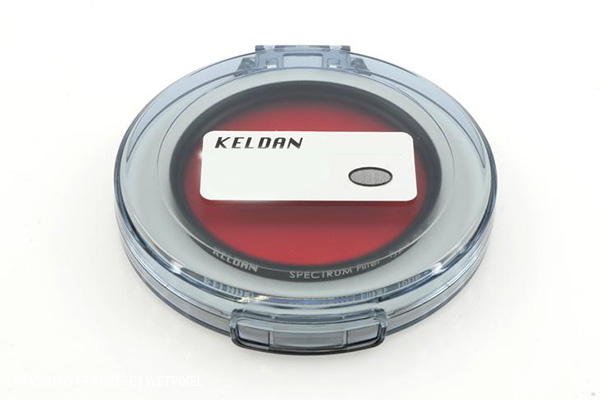
Review: Keldan Spectrum and Ambient Filters
By Massimo Franzese
Keldan launched their Spectrum filters for lens color correction and Ambient filters for video lights in 2016. This first version was designed for color correction in blue water only. More recently, and after a series of extensive spectral measurements and field tests carried out in different locations around the globe, the range has been revised. I was very excited when I was asked to review the new Keldan offerings.
The products tested in this review are:
- Spectrum filter -2 (Nauticam WWL-1 version)
- Spectrum filter -4 B (Nauticam WWL-1 version)
- Ambient light filter 6m B
Keldan claims a color rendering index (CRI) of 92 for the filters. A CRI of 100 is the theoretical index for a blackbody’s radiation, and for a sense of scale, 92 is the CRI of a high-quality LED.
Keldan’s approach to color correction
The theory behind the Keldan solution for color correction consists of two main pillars:
The lens-mounted Spectrum filter balances the colors lost in the water, at the expense of a loss of overall exposure. The key benefit of filters is that they correct the colors throughout the whole frame, so you do not have the issue of footage and images having colorful subjects in the foreground and dim blue backgrounds.
Keldan offers two filter strengths, a -2 that offers color compensation of 4 meters of depth at the expense of 2 stops of light and a -4 which offers 8 meters of color compensation with an overall exposure reduction of 4 stops.
The -4 versions are offered in a blue water (B) and green water (G) versions. They are all available as (dry) screw-on filters in 58, 62, 67, 72, 77 and 82mm thread diameters and as specific filters that are mounted on the back of the Nauticam WWL-1 wet wide-angle lens with its bayonet system. These can be removed and applied underwater if required.Keldan also produces Ambient filters for their 4X and 8X video lights range which are now available in blue (B), blue-green (BG) and green (G) colors. As any video light has a constant color temperature, its spectrum does not change with depth. Historically, this has meant that once the camera is set to a custom white balance, this would not match the color temperature of the lights and red spots would appear in the frame in the areas exposed to artificial lighting. With the Ambient filters, it is possible to use a custom white balance and artificial lights at the same time with a homogeneous color temperature across the frame.
The Ambient filters are now available in two graduations to simulate ambient light at 6 and 12 meters of depth. The filters can be removed and replaced underwater. They are currently only available for Keldan’s 4X and 8X lights.
Both solutions can be used independently or in combination depending on preferences, taste and the equipment used.
Keldan’s Spectrum filter offer depth compensation relative to the depth of operation. For example, the -2 filter offers 4 meters of color compensation so, at 10 meters, the color spectrum that this filter produces is the same as would be present at 6 meters without the filter, or at 14 meters, the spectrum produced a 10 meter one.
In practical terms, I have found the -2 filter to operate well at any depth down to around 15 meters with optimum performance around 12 meters.
The Ambient light filters have a different rating system and correct the spectrum of Keldan’s video lights to the nominal depth declared. Thus a 6-meter filter provides the color spectrum of light that occurs at 6 meters regardless of the actual depth it is operated at.
For example, my testing used Keldan lights with blue water 6m Ambient light filters attached. Hence, the lights’ output was modified to the spectrum of light that is available at 6 meters of depth. The testing was done between 6 and 13 meters, so the lights appeared slightly warmer than the ambient light when I was shooting deeper. I found that I preferred this as it helped to make sure they were visible in the footage and limited the reduction in the lights’ power.
In summary, it is essential to understand how the two filters operate and understand the way that Keldan describe dept ratings to maximize the effectiveness of color correction in water.
It is also important to stress that when shooting past a certain depth there are no red or orange wavelengths left in the color spectrum and no filter can restore what is not there. From their experimentation, Keldan does not recommend the use of their filters much past 20 meters, but from experience, I have found that is is possible to push those limits if the water is very clear and the camera’s color management is capable of dealing with the absence of red spectrum. In general, terms to shoot deeper than 20-25 meters, the only option left is to use powerful lights with a wide enough beam angle to cover the frame, but this leaves the issue of the loss of background color unresolved.
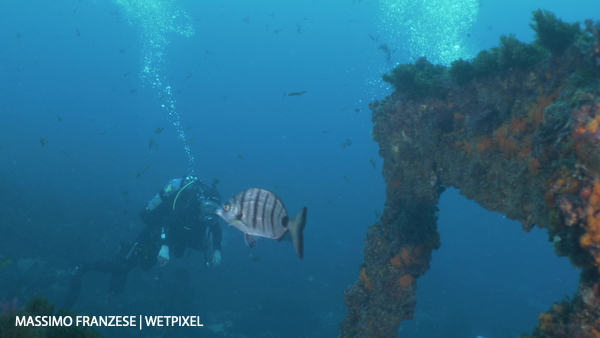
Field Testing
I was able to take the new Keldan Spectrum and Ambient light filters with me on a trip to Tiger Beach on the Bahamas Grand Banks. Before shooting video, I spent a whole day taking stills and testing the -2 and -4 Spectrum filters and I found that this helped me understand how the filters were operating in the diving conditions. As all the action was at depths of between 6 to 13 meters, I chose to combine the -2 stop Spectrum Filter with the weaker (6m) Ambient light filter. The clear waters of the Bahamas ensured that there was lots of ambient light, so the effect of the lights using the 6m Ambient filter was only visible at close range, and with the 12m Ambient filter, I could not see any effect of the lights at all. This was despite using lights with 15,000-lumen output per unit
The WWL-1 filter was applied before entering the water during the entire trip, and I never experienced any bubbles or other issues. Removing the filter in the water is possible using the WWL-1, but typically I only used this option to return to a no filter scenario instead of swapping filters between -2 and -4.
When the subject was a few meters away, the effect of the lights was not immediately visible, and the color accuracy was truly superb across the whole frame. This unedited snapshot emphasizes the richness of color provided by the Spectrum filter once a custom white balance was made. Please consider that the snapshots are taken with a flat unsaturated color profile and will look different in the final edit.
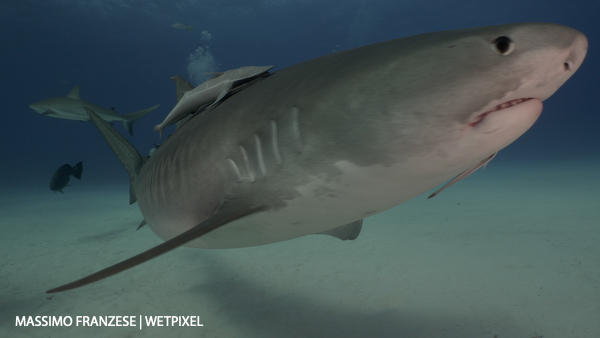
It is useful to note that both divers and the fish a few meters behind the subject are perfectly in color balance with the foreground. The use of the -2 filter on the camera also allowed me to shoot at 1/50 ISO200 24p f/8 to f/11, which provides great performance with the Panasonic GH5 and the WWL-1 lens. The shots are super crisp and vibrant with details.
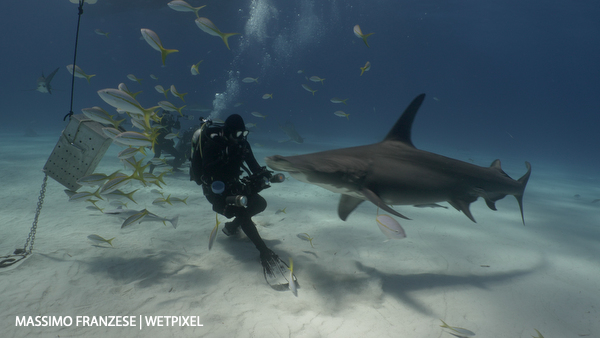
The Spectrum filter -2 stops performed very well and surprisingly did not introduce any red tint even when pointed directly at the surface. In this snapshot, the belly of the shark was lit by the 8X video lights fitted with Ambient filters, and the surface by ambient light. It is possible to see that both are perfectly balanced.

Although it would have been possible to work without a filter, using them made the color rendering of footage and stills far superior. This image shows a still raw image that was white balanced in post taken with the WWL-1 without the spectrum filter. The vibrant colors provided by using the filters are not there, although the image is correct and the color is balanced across the frame.
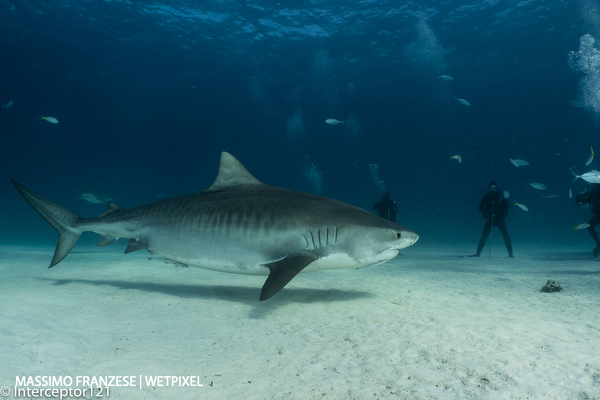
Keldan’s solution is primarily video focused, but I also tested the filters with strobes using homemade filters positioned behind the strobe diffusers. Generally, I found that the -4 spectrum filter produced extremely rich blues and intense colors.
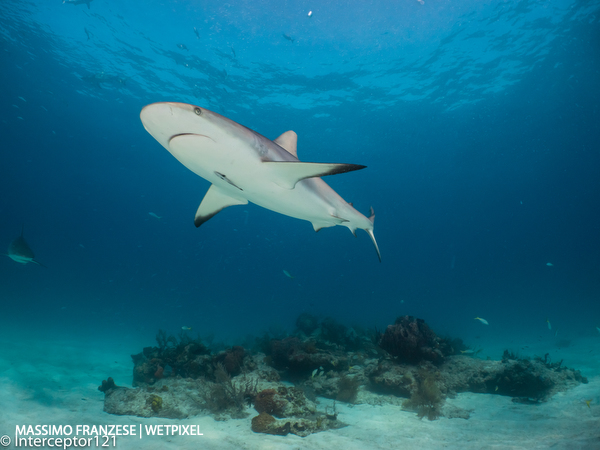
However, when pointing the camera upwards, there is a significant purple tinge, and I found the GH5’s high ISO performance was not good enough for the -4 stops filter. Users of larger sensor cameras or cameras that perform better at high ISOs may find the -4 filter very useful at depths of between 10 and 20 meters.
So far, I have produced several short clips from this trip to illustrate the effectiveness of this solution.
The first is a combination of wide angle shots of hammerheads where you can see the -2 stop filter in action:
The second has some close-up tiger shark shots where you can see the effect of the Spectrum filter in combination with ambient light filters.
The third video has a combination of wide angle and close-up shots, so you can see the whole mix:
I was also able to test the -2 filter in the blue-green waters of the Mediterranean. The results were less exciting and darker.
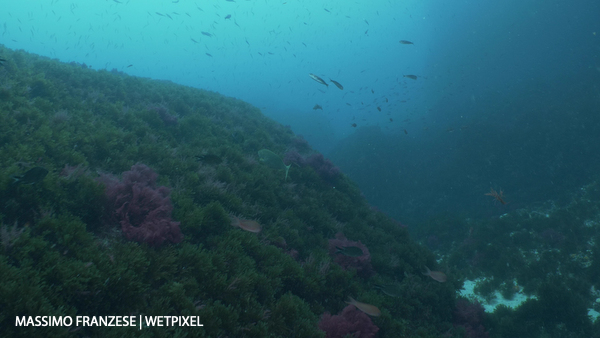
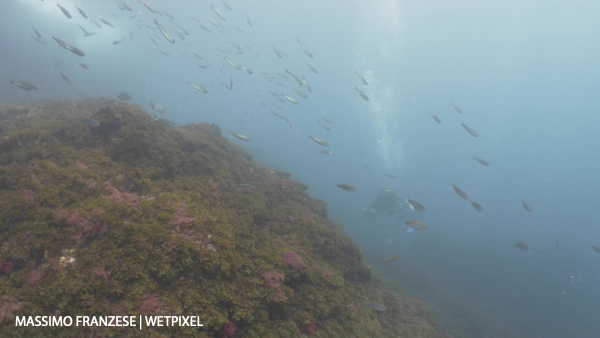
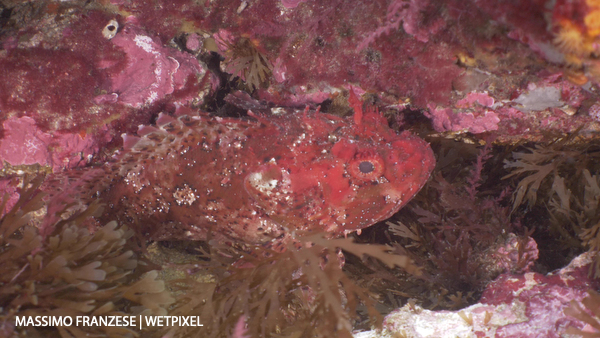
Performance in terms of color rendering was excellent; however, the much darker waters means you need to decide whether to trade the two stops of ISO or shoot at a lower ISO with smaller apertures. The WWL-1 version of the Spectrum filter can be removed underwater, so you are not stuck with your choice for the entire dive. In the examples above, after shooting a few clips at ISO1600, I decided to take the filter off and shoot with manual white balance. While this degraded the color rendering, the footage was less noisy.
If using the lens mounted version this is a choice you have to commit to in advance, so knowledge of the diving conditions is critical.
Filters for Still Images
One final note on the use of filters and strobes in combination. Keldan gave me this idea, and with support from Alex Mustard, I went and took some still images. I believe that the color rendering is genuinely phenomenal. All the elements through the frame are well color balanced. I believe that this effect could not be achieved solely with strobes

By comparison, here is a similar shot taken without the Spectrum filter. I used warming 4600K diffusers on the strobes. You can see that once the strobe’s output has dropped off, the colors are lost at the edges of the frame and the color of the water column is not as pleasing as the filter shots.
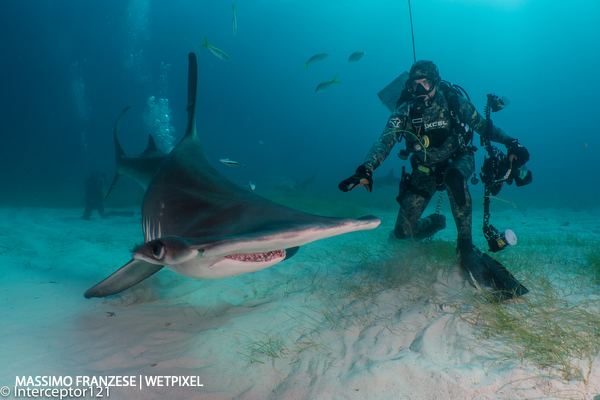
Conclusion
Filters have always been a subject of controversy. They can be used to achieve outstanding results for both video and still images underwater, and Keldan’s Spectrum filters and Ambient filters are a great tool. Their correct use, combined with the correct camera settings and technique, can produce outstanding results. The WWL-1 version of the Spectrum filter combined with the light mounted Ambient filter also gives the option of deciding how to shoot the scene once underwater. This is especially important in all those situations where bottom time and shooting opportunities are limited.
About the author
Massimo Franzese (aka Interceptor121) is a management consultant specializing in mergers and acquisitions. He has a background in electronics engineering and is a scuba diving instructor passionate about travel, nature, the environment, physics, technology, scuba diving, photography, and videography.
His blog, interceptor121 focuses on tools, techniques, and tips and he posts all his trip videos along with various equipment tests and reviews on his YouTube channel.
FTTC Disclosure The equipment used for this review included Keldan Spectrum -2 and -4 filters for blue water Keldan 8X video lights and Keldan Ambient light filters. The equipment was kindly loaned by Keldan and returned at the end of the review. A complimentary set of -2 and -4 filters was gifted to the reviewer as a thank you from Keldan for the extensive feedback provided during the review period.